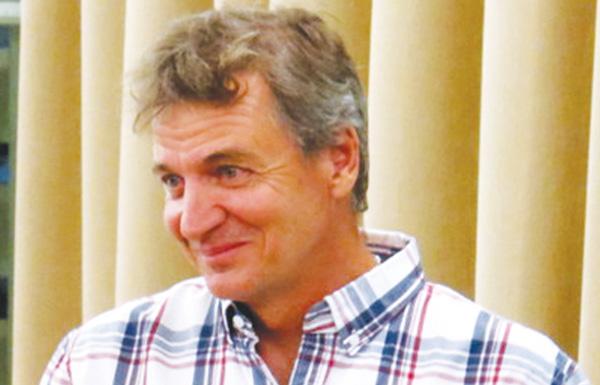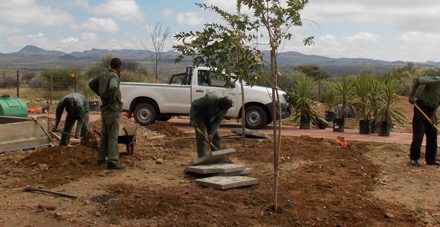
Desert horses face extinction

“If it does not rain next year, the wild horses near Aus will face serious challenges regarding their survival“ said the CEO of Gondwana Collection Namibia, Manfred Goldbeck, during a public talk about these special creatures at the Namibia Scientific Society.
He spoke about how the horses came to Namibia and in particular to the area around Aus in southern Namibia; what type of horses are living in the desert and how they have adapted.
How did they get to Aus? What breed are they? How do they survive the arid conditions? These and many other issues, Goldbeck addressed in his presentation before a packed meeting of the Namibian Scientific Society last week Wednesday.
Goldbeck said this was a particularly poor year for the horses.
“We have received almost no rain this year, only 10mm in January and 5mm in June. This horse are foraging on grass of the previous season.
“The situation has now become critical. If no rain comes in March and April next year, we are facing a huge problem” he told his captivated audience adding that they have already started to provide additional fodder to help the horses survive until the next rain season.
The wild horses of the Namib are found in only a small section of the Namib Naukluft Park, within the first 20 kilometres when entering the park from Aus. The horses frequent the plains to the south and the west of the Gamub Spring.
Their presence has lead to much speculation in the past, assigning their origins to horses brought in by the Schutztruppen based at Aus and then abandoned, or feral horses from the Union of South Africa forces when they occupied South West Africa in 1915, or even the lost pedigree horses from the stables at Schloss Duwisib.
Goldbeck’s earlier research has shed much light on the true origin of the horses refuting some claims and showing others as more probable but nothing has been proven beyond doubt.
The desert horse talk was part of four public talks organised by Hitradio Namibia and the Namibia Scientific Society to promote the yearly charity drive of the private radio station’s Aktion Sonnenstern which started this week officially.
This year, in addition to the awareness and fundraising campaign for the desert horses, it also supports the Have-A-Heart campaign for pet owners in Windhoek, the wildlife rehabilitation sanctuary NARREC and the Namibian Dolphin Project. Aktion Sonnenstern carries on until Christmas Eve.
For those who could not attend the wild horse presentation in Windhoek, the Scientific Society announced this week it will be repeated in Swakopmund titled Wild Horses of the Namib Desert, on 10 December at 19:00. The lecture will take place at the Swakopmund Museum.











































